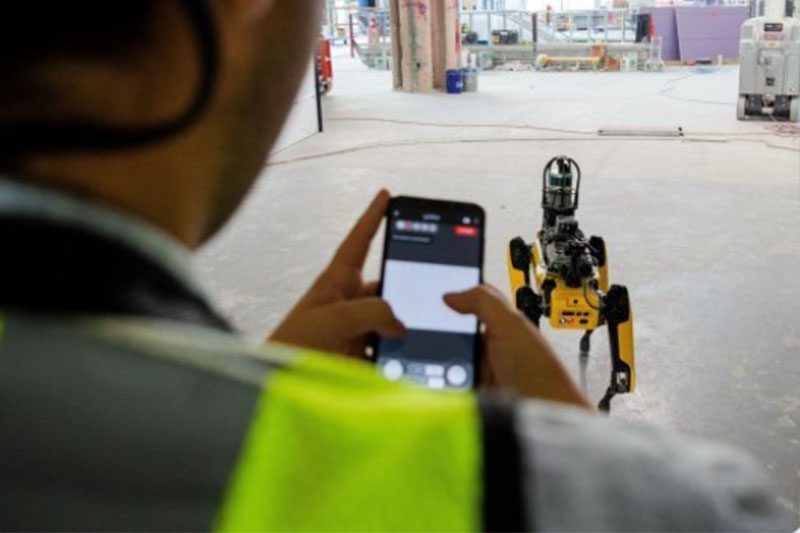Challenges and Risks in Working with Robots

The rise of semi-autonomous (and, eventually, autonomous) robots within the workplace brings many challenges. The technology itself is one aspect, but there are other operational concerns that are yet to be fully overcome.
From personnel to regulatory standards, the following discusses the physical and mental responsibilities to be addressed before true integration becomes possible.
Addressing Multiple Risk Factors
We can simplify the risks to be overcome by grouping them into categories, namely:
- People-centric: Such as development and research, asset owners and working staff
- Organisational: A shift from manual labour to that of robotic, or a combination of the two
- Environmental: Creating an area conducive to a partial robotic workforce
- Electrical classification
- Level of robotic interaction and expertise: To include the skills of operators, engineers etc.
- Regulation and standard adherence
- Service capabilities: Such as global delivery
People-Centric Challenges
This is a three-fold challenge.
- The first is that of overcoming the natural caution of working staff to integrate with robotics. This trust can only be gained through robust and ongoing training. They’ll need to feel comfortable around the technology, therefore need to understand what it does, its limitations, safety features and more. A vital aspect of successful robotic implementation is to accept the hesitancy of the human workforce. Does this new technology threaten their jobs? Does it represent a risk to their safety? What if it goes wrong? There’s no substitute for excellent training and the realisation that acceptance will take time.
- Secondly, are the asset owners ready for change? Do they understand the advantages and the need for adaptation and change?
- What about your organisational researchers & developers? Do they have a good grasp about the requirements for the end user? Are the two joined up, working jointly towards a defined goal?
People are the single-most important factor in the shift to robotic working. The challenges come from ensuring that everybody has access to and understands the roles that robots will take within the workplace. They must also undertake relevant and ongoing training to be fully aware of what this revolutionary step means.
Organisational challenges
The shift brings with it various organisational challenges. The most pressing is the move from total manual operation to a semi or autonomous one. Not only does this require the people mindset to alter, but also that of work process, budgeting and financial obligations.
Strategic planning is key to effective implementation. Creating a viable development process, validation mock-ups and simulated working practices should be put into place and worked through and tested well before deployment. Is the Wi-Fi and connectivity capable of the inevitable increased workload? How will the new way of working impact finances? Are there robust methods in place to ensure budget adherence and alternative capital outlays?
Environmental challenges
The utilisation of robots can’t be embraced without ensuring that the working environment is conducive to their presence. You’ll need to consider safety to humans onsite, aspects such as dust, dirt and contamination, as well as external areas and inclement weather challenges.
The physical layout of where a robot will traverse needs to be fit for purpose. This will involve moving potential obstacles and adding aspects such as docking stations for charging.
Electrical classification
Does the facility have adequate certification? This applies not only to the current robotic upgrade, but is there an ability to upgrade should this be necessary in the future?
Robotic interaction and expertise
It’s likely that an initial set-up won’t include all the possible advances that might be added in the near future. Even a simplistic robotic addition takes time and investment, as well as the expertise of individuals such as engineers, technicians and operators.
Future-proofing is essential, and taking strategic steps at this point for robotic expansion is both prudent and cost-effective.
Regulation and standard adherence
Any level of a robotic workforce brings with it increased responsibilities regarding data storage, communication and adherence to integrity. Increasing security and having the relevant expertise on the workforce is essential.
Embracing autonomic elements into a working environment is inevitable yet necessitates much preparation. The evolution of such technology heralds a brand new era of work in virtually every industry. Challenges are many, yet a variety of industries (such as manufacturing) is already semi-automated. Other areas, such as oil & gas, nuclear and mining, are fast becoming aware of the many advantages of robotic technology. A taskforce that can work safely in hazardous environments, so reducing the need for human interventions, is the future that lies before us. It may be a few decades before full automation is the norm, but strategic investment and planning today will be the hallmark of the companies that best benefit in the future. The savvy out there will be the ones winning contracts in a landscape that’s set to become ever-more competitive in the years to come.
Equipment provider, Nexxis, is committed to a unique dual model perfectly created to complement this automated environment. Not only do they provide a fully flexible way to lease and rent apparatus to suit dynamic needs, but they’re world-leaders when it comes to bringing proven automated and robotic equipment to suit individual company needs.
Discover more about this refreshing approach to robotic inspection or contact us today for a no-obligation chat.
